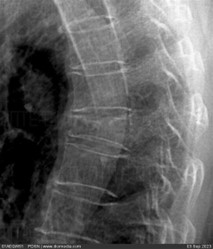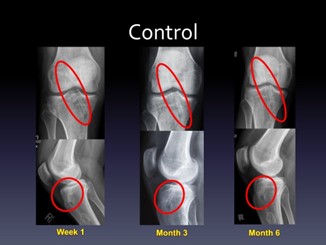I’ve been Diagnosed with a bulging Disc in My Back. Can Chiropractic help me???
So, you have been diagnosed with a bulging disc in your lower back and you have been told you need to have surgery or you could end up in a wheel chair for the rest of your life if you don’t have surgery. I have heard this line many times from my patients.
A bulging disc is a common finding on an MRI exam and most times you are not even aware you have a bulging disc. A bulging disc is something you do not want to ignore because it can become a very serious problem. Let’s look at what a disc is, where they are found, what can cause a bulging disc, why it can lead to significant problems and how to avoid surgery.
 Disc are found between your vertebra (Spinal bones) at each level of the spine and the disc allow the spine to move. Disc are very strong, pliable and durable; however, they can wear out and break down with over use. Activities such as repetitive bending, lifting, twisting, carrying and even prolong sitting can weaken the structures of a disc so that the outer edges of the disc begin to stretch and bulge outward. A disc does not have a nerve supply, it is like your finger nails or your hair. You don’t feel pain when you cut your finger nails or your hair. You only know your disc is bulging when the bulge is pressing on a spinal nerve.
Disc are found between your vertebra (Spinal bones) at each level of the spine and the disc allow the spine to move. Disc are very strong, pliable and durable; however, they can wear out and break down with over use. Activities such as repetitive bending, lifting, twisting, carrying and even prolong sitting can weaken the structures of a disc so that the outer edges of the disc begin to stretch and bulge outward. A disc does not have a nerve supply, it is like your finger nails or your hair. You don’t feel pain when you cut your finger nails or your hair. You only know your disc is bulging when the bulge is pressing on a spinal nerve.
A bulging disc can be pushed back into place allowing the anulus (outer ring) of the disc the opportunity heal. A well placed and proper chiropractic adjustment can move the disc back into place allowing the disc to properly heal.

If a bulging disc is allowed to persist and is not treated it can cause sciatica and over time will break down, deform and can eventually herniate. If it herniates chiropractic treatments are a good starting point to help return normal function to your spine. If the disc is too far-gone surgery may be your only option. Waiting is not a good option.
If you have been diagnosed with a bulging disc or you are having back pain and would like relief, click on the link below for an appointment or call my office Monday thru Friday 8am to 6pm.



 The X-ray below reveals a misaligned right ilium from a traumatic injury. Also note how the spine is tilting to the right causing a subluxation at L4. If these misalignments are not corrected the body will fixate and heal into this abnormal position resulting in wear and tear of the misaligned joints and inflammation of the surrounding nerves. Organs that are supplied by those nerves will suffer and not function at their optimal levels.
The X-ray below reveals a misaligned right ilium from a traumatic injury. Also note how the spine is tilting to the right causing a subluxation at L4. If these misalignments are not corrected the body will fixate and heal into this abnormal position resulting in wear and tear of the misaligned joints and inflammation of the surrounding nerves. Organs that are supplied by those nerves will suffer and not function at their optimal levels.


 Today the orthopedic industry is seeing a significant increase in joint replacement surgeries. Arthritis is not a disease of old age it is a nutritional deficiency induced disease that can be halted and improved with a healthy diet and the use of properly recommended supplements. Chiropractic is very helpful in restoring mobility and proper function to arthritic joints. If you are feeling the effects of arthritis and need help getting your health back click on this link or call my office.
Today the orthopedic industry is seeing a significant increase in joint replacement surgeries. Arthritis is not a disease of old age it is a nutritional deficiency induced disease that can be halted and improved with a healthy diet and the use of properly recommended supplements. Chiropractic is very helpful in restoring mobility and proper function to arthritic joints. If you are feeling the effects of arthritis and need help getting your health back click on this link or call my office.

